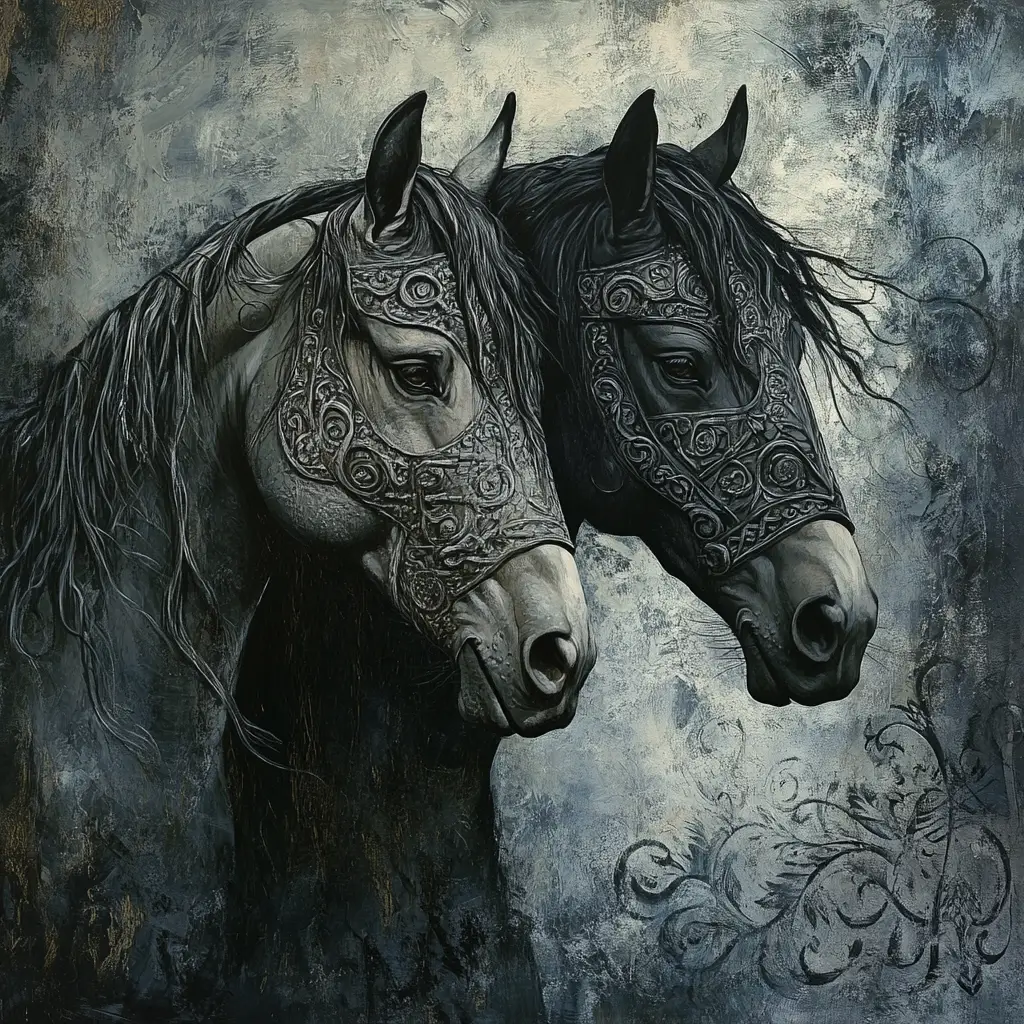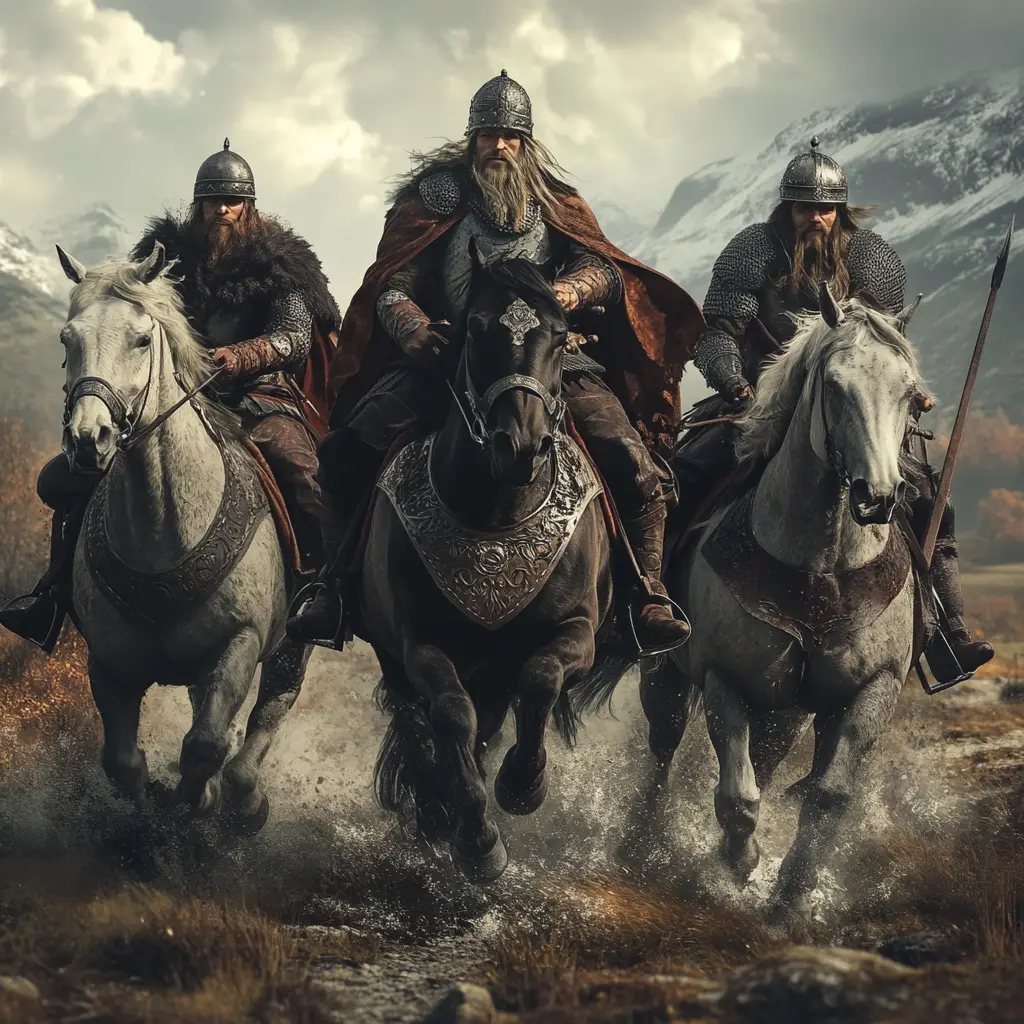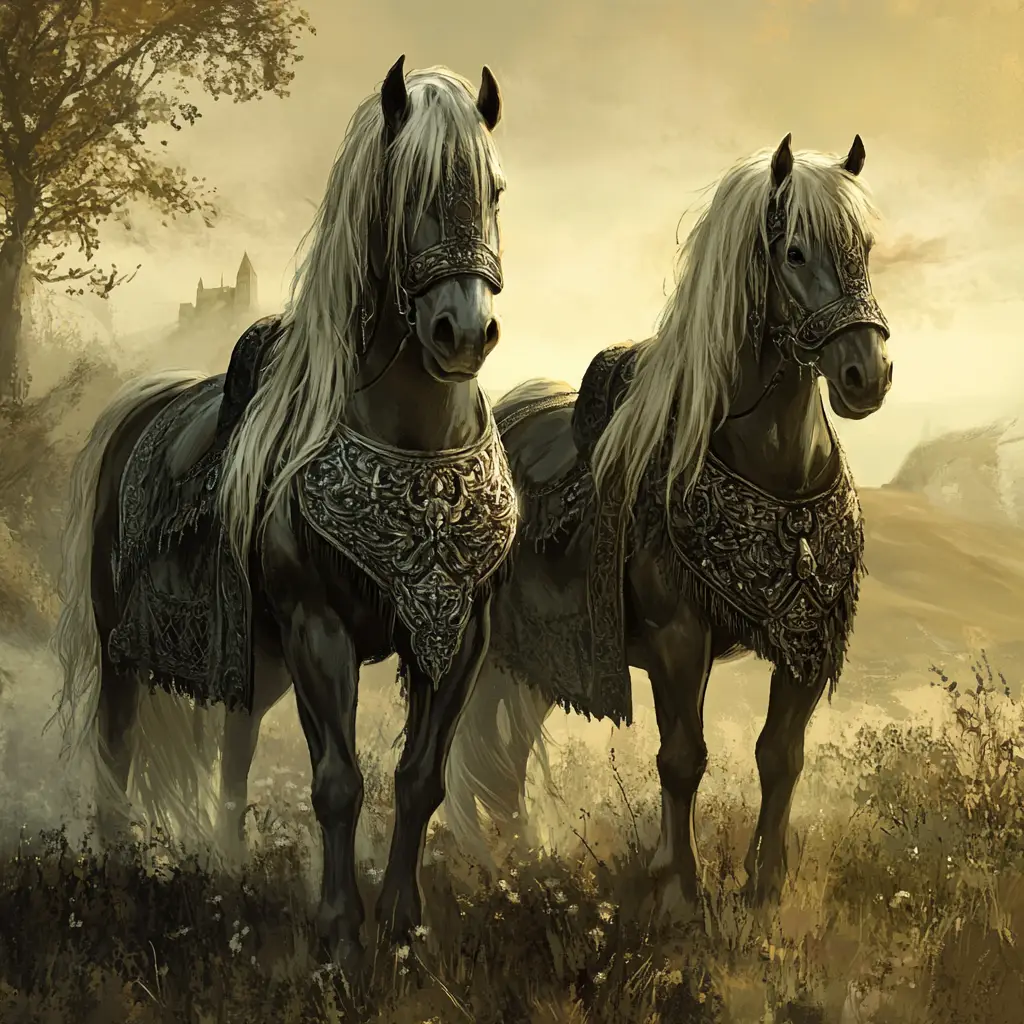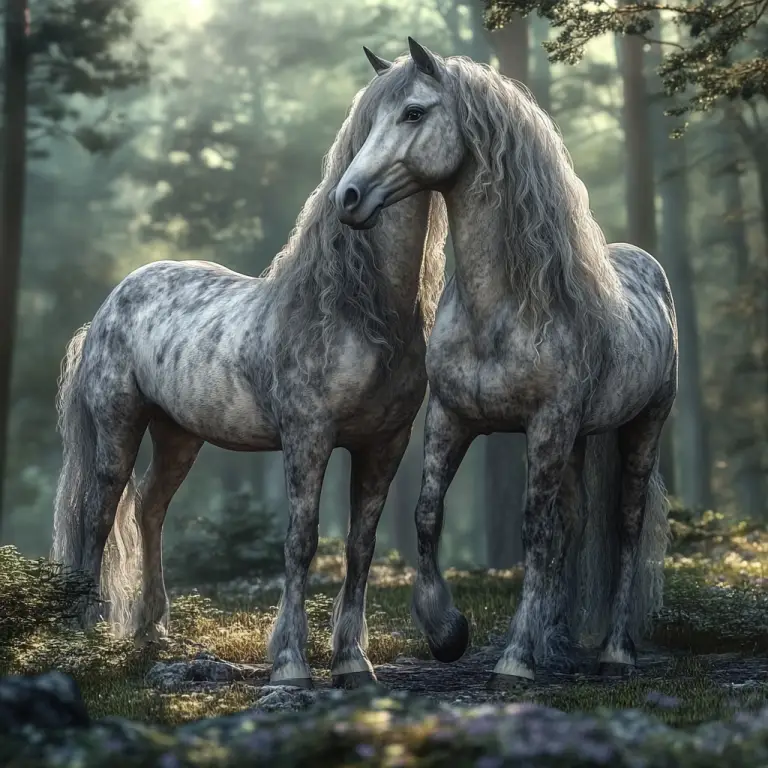Horses hold a prominent place in Norse mythology, symbolizing strength, speed, and the connection between realms. These majestic creatures are often associated with the gods, warriors, and the cosmology of the Norse people, playing vital roles in myths, sagas, and rituals.
Key Horses in Norse Mythology
Sleipnir
The most famous horse in Norse mythology, Sleipnir is an eight-legged steed belonging to Odin, the Allfather.
Known for his speed and endurance, Sleipnir can travel between the nine realms of Yggdrasil.
He was born from Loki, who transformed into a mare to distract the stallion Svaðilfari and later gave birth to Sleipnir.
Gullfaxi
A golden-maned horse gifted to the hero Sigurðr (Sigurd) by the giant Hrungnir after Sigurd slew the dragon Fafnir.
Gullfaxi is a symbol of valour and reward in heroic sagas.
Hófvarpnir
A horse ridden by the goddess Gná, a messenger of Frigg.
Hófvarpnir is described as capable of travelling through air and water, symbolizing divine communication and freedom.
Horses in Norse Cosmology
The Sun and Moon Horses
Árvakr and Alsviðr are the horses that pull the chariot of the Sun goddess Sól across the sky.
They are fitted with magical bellows to protect them from the heat of the sun.
Skinfaxi and Hrimfaxi:
Skinfaxi (“Shining Mane”) belongs to Dagr (Day) and lights the world during the day.
Hrimfaxi (“Frost Mane”) belongs to Nótt (Night) and leaves frost and dew in its wake.
Symbolism of Horses
Connection Between Realms
Horses, especially Sleipnir, symbolize the link between the divine, mortal, and underworld realms, serving as bridges in the Norse cosmology.
Strength and Speed
Horses represent the power and swiftness needed by gods and heroes to fulfil their roles in myths.
Cycles and Natural Forces
Horses like Árvakr and Alsviðr highlight the Norse understanding of natural cycles, such as the movement of the sun and moon.
Horses in Rituals and Society
Horses were sacred animals in Norse culture, often associated with sacrifice and divination.
In some archaeological finds, horse remains have been discovered in burial sites, reflecting their importance in the afterlife.



